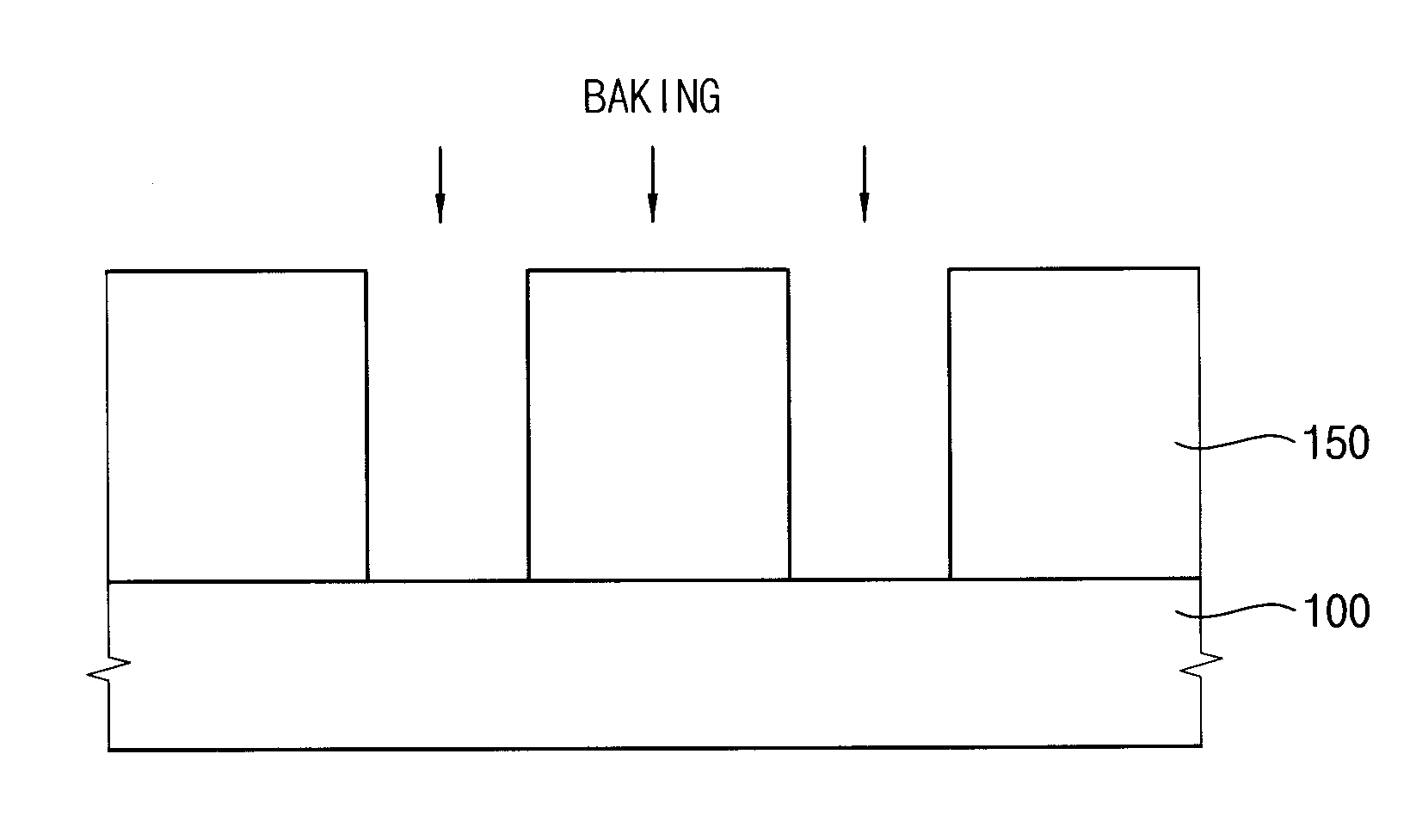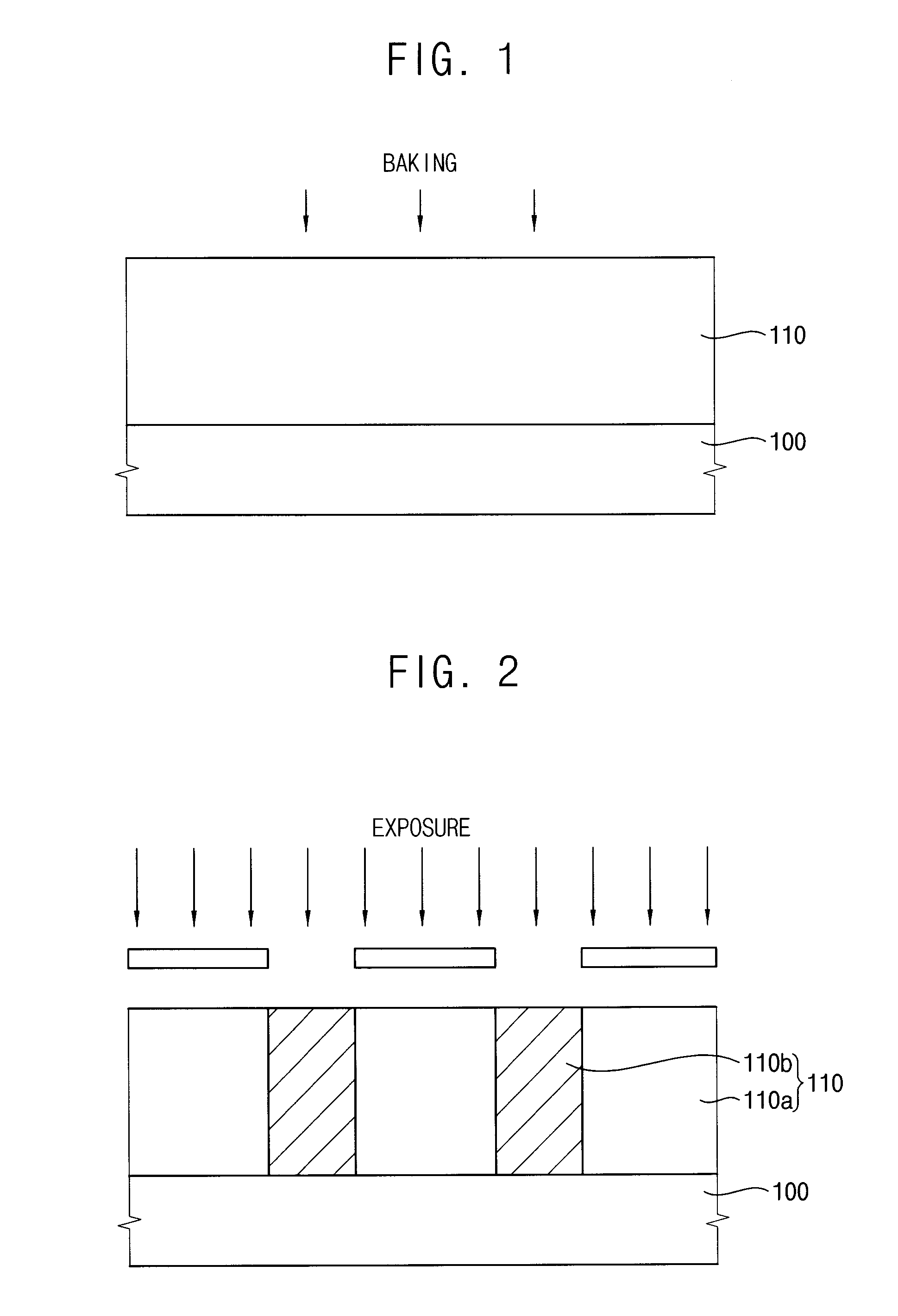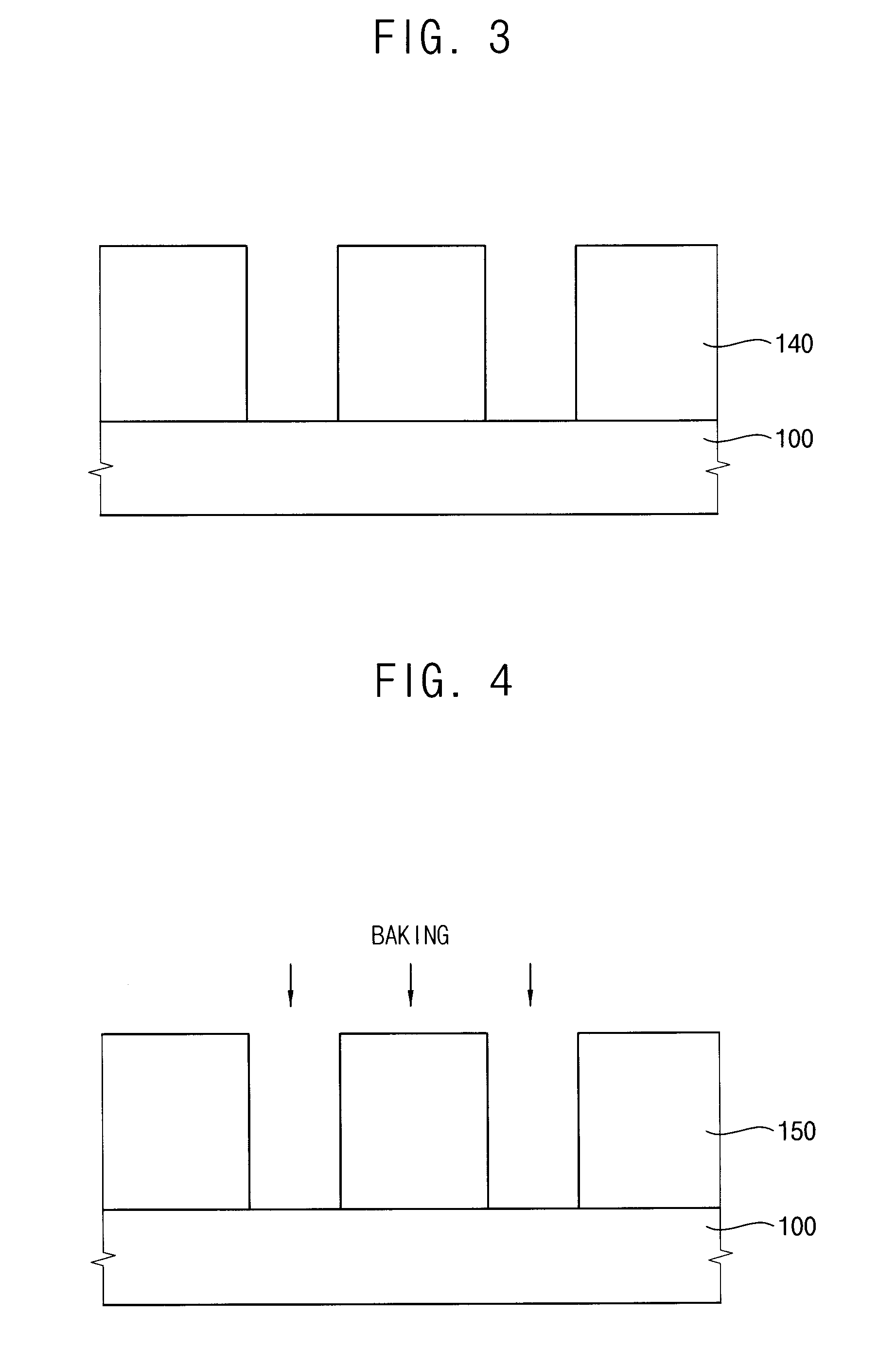Methods of forming a passivation layer
a technology of passivation layer and passivation layer, which is applied in the field of compositions for forming passivation layer and methods of forming passivation layer, can solve the problems of frequent generation of read errors and easy influence of capacitors by external factors, and achieve good characteristics
- Summary
- Abstract
- Description
- Claims
- Application Information
AI Technical Summary
Benefits of technology
Problems solved by technology
Method used
Image
Examples
example 1
[0083]A compositions for forming a passivation layer was prepared by mixing about 1.5 wt % of polyamic acid, about 29.5 wt % of polyhydroxyamide, about 5 wt % of diazonaphthoquinone, about 0.1 wt % of a surfactant, about 2 wt % of trimethoxy[3-(phenylamino)propyl] silane, a cross-linking agent, a dissolution modifier, and a remainder of an organic solvent, based on a total weight of the composition. In this case, γ-butyrolactone was used as an organic solvent.
example 2
[0084]A composition for forming a passivation layer was prepared by mixing about 29.5 wt % of polyamic acid, about 1.5 wt % of polyhydroxyamide, about 5 wt % of diazonaphthoquinone, about 0.1 wt % of a surfactant, about 2 wt % of trimethoxy[3-(phenylamino)propyl] silane, a cross-linking agent, a dissolution modifier, and a remainder of an organic solvent, based on a total weight of the composition. In this case, γ-butyrolactone was used as an organic solvent.
example 3
[0085]A composition for forming a passivation layer was prepared by mixing about 15.5 wt % of polyamic acid, about 15.5 wt % of polyhydroxyamide, about 5 wt % of diazonaphthoquinone, about 0.1 wt % of a surfactant, about 2 wt % of trimethoxy[3-(phenylamino)propyl] silane, a cross-linking agent, a dissolution modifier, and a remainder of an organic solvent, based on a total weight of the composition. In this case, γ-butyrolactone was used as an organic solvent.
PUM
| Property | Measurement | Unit |
|---|---|---|
| temperature | aaaaa | aaaaa |
| elongation | aaaaa | aaaaa |
| elongation % | aaaaa | aaaaa |
Abstract
Description
Claims
Application Information
 Login to View More
Login to View More - R&D
- Intellectual Property
- Life Sciences
- Materials
- Tech Scout
- Unparalleled Data Quality
- Higher Quality Content
- 60% Fewer Hallucinations
Browse by: Latest US Patents, China's latest patents, Technical Efficacy Thesaurus, Application Domain, Technology Topic, Popular Technical Reports.
© 2025 PatSnap. All rights reserved.Legal|Privacy policy|Modern Slavery Act Transparency Statement|Sitemap|About US| Contact US: help@patsnap.com



